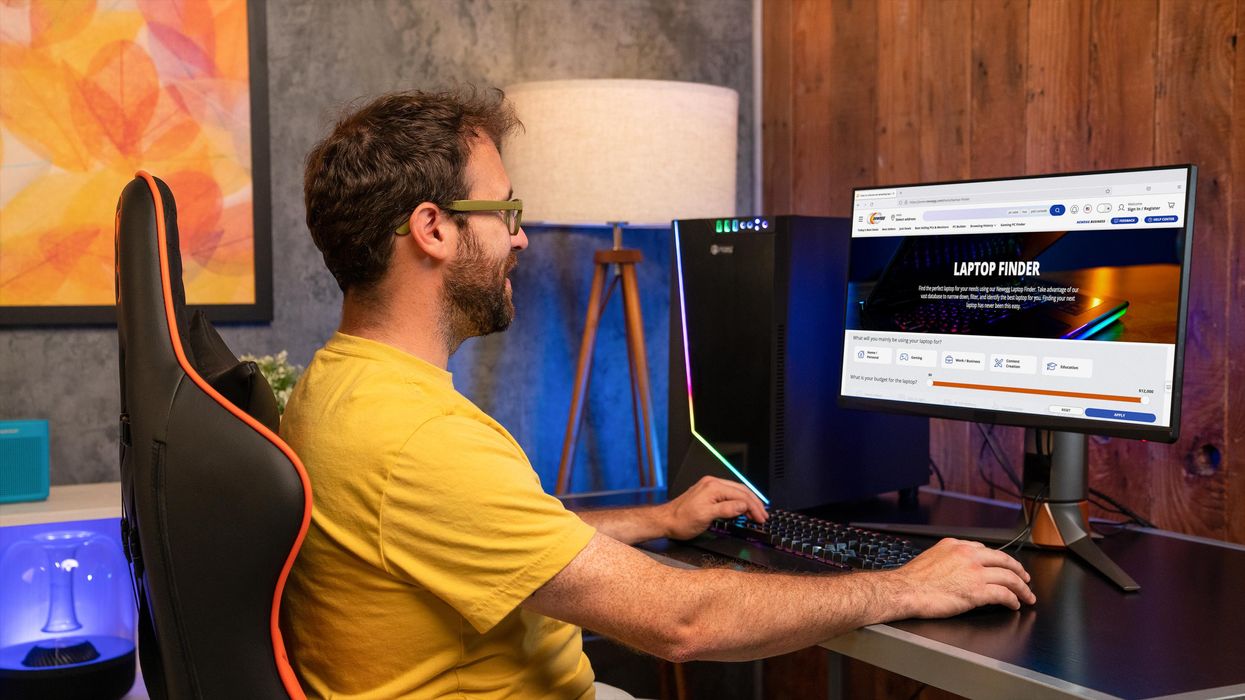Shopper Experience
12 August 2022
How Newegg is personalizing the ecommerce shopping experience
With new tools, shoppers provide specifications, and Newegg provides recommendations.

With new tools, shoppers provide specifications, and Newegg provides recommendations.

Ask how ecommerce shopping experiences will advance, and personalization is never far from the top of the list.
When seeking to make a sale, understanding what a person is seeking and being able to deliver it to them has the potential to bring powerful results. With a growing amount of data available and advances in the tools that can be embedded into a user experience, there is more possibility than ever to bring these features to marketplaces and online stores.
Yet it's still early days for this evolution. Often, we find ourselves asking, What do we mean by personalization? And what will this newly personalized shopping journey look like? Ask the consumer technology ecommerce platform Newegg, and the answer appears to be that it will involve gathering information from users, and the ability to provide recommendations based on what they've said. A series of recently launched features from Newegg indicate a personalized experience can be an interactive one.
This week, the platform debuted a tool called Laptop Finder within its marketplace. Arriving as college shopping season is getting underway, this helps customers explore the options available for selecting a Windows laptop.
Customers answer a series of prompts, based on three areas:
Once these answers are provided, Newegg scores available laptops compared with a user’s preferences, and provides recommendations.
“A large portion of customers need help understanding the various options to consider when shopping for a laptop,” said Oscar Wong, senior director of product management for Newegg. “Shoppers can spend hours scouring the Internet for research, so Laptop Finder is designed to provide personalized recommendations. Our new tool helps take the guesswork out of laptop buying.”
This follows the June release of Gaming PC Finder. Through this tool, customers provide their desired monitor resolution, four games they are likely to play and budget. Newegg then grades PC builds based on performance expectations. Users can also enter their current CPU and GPU, and Newegg then makes a comparison to other CPU and GPU. It shows details like frames per second to help customers understand the opportunity that comes with upgrading.
Along with offering tools on its own platform, Newegg created a standalone resource to provide personalization. In July, it launched JustGPU.com, a site that is fully dedicated to graphics cards, which are a particular area of focus for gaming.
The tool includes features to filter by price, manufacturer, type and memory size. They can also see specs like frame rates, CPUs, monitor resolution and physical size. A comparison tool in the site allows for a side-by-side comparison.
It’s a sign of how personalization can bring increasing specialization. Any selection made on JustGPU is completed at Newegg.com. But the tool offers a destination for those seeking a specific type of product.
Ecommerce has always specialized in offering choice. Newegg’s recent launches suggest that there’s opportunity to help customers hone in on the products from that voluminous selection that match what they’re seeking. Creating moments for interaction, such as selecting the games they love playing, can provide an entry point into the shopping experience. Showing a product that aligns with their specification, in turn, could go a long way toward making it feel like its already theirs.
Labor disputes on the West Coast could cause further disruption heading into peak season.
When the first half of 2023 is complete, imports are expected to dip 22% below last year.
That’s according to new data from the Global Port Tracker, which is compiled monthly by the National Retail Federation and Hackett Associates.
The decline has been building over the entire year, as imports dipped in the winter. With the spring, volume started to rebound. In April, the major ports handled 1.78 million Twenty-Foot Equivalent Units. That was an increase of 9.6% from March. Still it was a decline of 21.3% year over year – reflecting the record cargo hauled in over the spike in consumer demand of 2021 and the inventory glut 2022.
In 2023, consumer spending is remaining resilient with in a strong job market, despite the collision of inflation and interest rates. The economy remains different from pre-pandemic days, but shipping volumes are beginning to once again resemble the time before COVID-19.
“Economists and shipping lines increasingly wonder why the decline in container import demand is so much at odds with continuous growth in consumer demand,” said Hackett Associates Founder Ben Hackett, in a statement. “Import container shipments have returned the pre-pandemic levels seen in 2019 and appear likely to stay there for a while.”
Retailers and logistics professionals alike are looking to the second half of the year for a potential upswing. Peak shipping season occurs in the summer, which is in preparation for peak shopping season over the holidays.
Yet disruption could occur on the West Coast if labor issues can’t be settled. This week, ports from Los Angeles to Seattle reported closures and slowdowns as ongoing union disputes boil over, CNBC reported. NRF called on the Biden administration to intervene.
“Cargo volume is lower than last year but retailers are entering the busiest shipping season of the year bringing in holiday merchandise. The last thing retailers and other shippers need is ongoing disruption at the ports,” aid NRF Vice President for Supply Chain and Customs Policy Jonathan Gold said. “If labor and management can’t reach agreement and operate smoothly and efficiently, retailers will have no choice but to continue to take their cargo to East Coast and Gulf Coast gateways. We continue to urge the administration to step in and help the parties reach an agreement and end the disruptions so operations can return to normal. We’ve had enough unavoidable supply chain issues the past two years. This is not the time for one that can be avoided.”